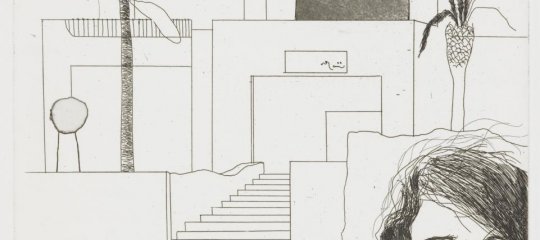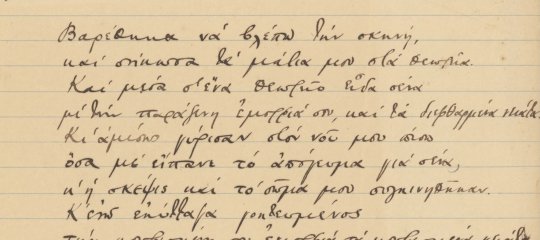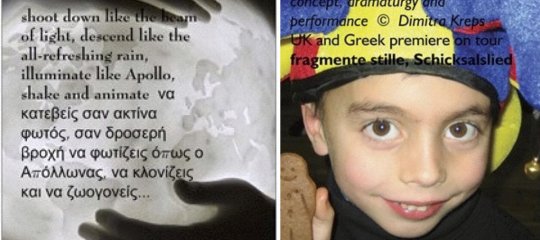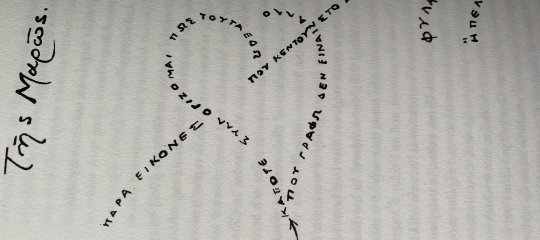9ο Διεθνές Συνέδριο: Διαπολιτισμική Εκπαίδευση - Ελληνικά ως δεύτερη ή ξένη γλώσσα
Παν/μιο Πατρών, 14-16 Ιουλίου 2006Το Κέντρο Διαπολιτισμικής Εκπαίδευσης διοργανώνει το 9ο Διεθνές Συνέδριο με θέμα «Διαπολιτισμική εκπαίδευση - Ελληνικά ως δεύτερη ή ξένη γλώσσα», που αποτελεί συνέχεια των οχτώ προηγούμενων επιτυχημένων Συνεδρίων.
Κύριος ΣΤΟΧΟΣ του Συνεδρίου είναι η διάδοση της ελληνικής γλώσσας και του ελληνικού πολιτισμού πέρα από τα όρια του ελλαδικού χώρου μέσα από μια ουσιαστική προσέγγιση θεμάτων της Διαπολιτισμικής Εκπαίδευσης και της διδασκαλίας της ελληνικής γλώσσας ως δεύτερης ή ξένης, με ιδιαίτερη έμφαση στην παρουσίαση ερευνητικών ανακοινώσεων.
Οι ΘΕΜΑΤΙΚΕΣ ΕΝΟΤΗΤΕΣ είναι οι εξής:
·Θεωρητικές προσεγγίσεις στη Διαπολιτισμική Εκπαίδευση
·Ερευνητικές προσεγγίσεις στο χώρο της Διαπολιτισμικής Εκπαίδευσης
·Η διδασκαλία της ελληνικής σε αλλοδαπούς και παλιννοστούντες μαθητές στην Ελλάδα
·Θεωρητικές προσεγγίσεις στη Διδακτική της ελληνικής ως δεύτερης ή ξένης γλώσσας
·Ερευνητικές προσεγγίσεις στη Διδακτική της ελληνικής ως δεύτερης ή ξένης γλώσσας
·Η ελληνόφωνη εκπαίδευση στο εξωτερικό – Ελληνόφωνες μονάδες, Στατιστικά δεδομένα
·Εκπαιδευτική πολιτική για την ελληνική γλώσσα και τη διάδοσή της στο εξωτερικό
·Υπογεννητικότητα στην Ελλάδα και Διαπολιτισμική Εκπαίδευση
·Διοίκηση σχολικών μονάδων και Διαπολιτισμική Εκπαίδευση
·Διαπολιτισμική Κοινωνική Ψυχολογία
Προσδοκούμε από τους εισηγητές και κυρίως τους εκπαιδευτικούς της αλλοδαπής και της ημεδαπής να ασχοληθούν με καινοτόμες ερευνητικές τεχνικές όπως μελέτη περίπτωσης και έρευνα-δράση, έτσι ώστε να γίνει ο Συνεδριακός θεσμός πιο ουσιαστικός όσο αναφορά την παροχή συγκεκριμένης γνώσης, πρακτικής εφαρμογής, μεθόδων και διαδικασιών. Το ΚΟΣΤΟΣ ΣΥΜΜΕΤΟΧΗΣ για τους ακροατές του συνεδρίου είναι 50 Ευρώ και για τους φοιτητές 30 Ευρώ.
ΠΡΟΤΑΣΕΙΣ ΓΙΑ ΑΝΑΚΟΙΝΩΣΕΙΣ: Οι ενδιαφερόμενοι θα πρέπει να στείλουν μέχρι τις 15 Μαΐου 2006:
1) έντυπο συμμετοχής,
2) ολόκληρο το κείμενο της ανακοίνωσής τους, έτοιμο προς δημοσίευση, σε ηλεκτρονική μορφή (δισκέτα ή e-mail), το οποίο δε θα ξεπερνά τις 8 σελίδες Α4 (μαζί με τη βιβλιογραφία) σε γραμματοσειρά: Times New Roman Greek, 12 pt. – διάστιχο μονό,
3) περίληψη στα αγγλικά 10-15 σειρές
4) σύντομο βιογραφικό σημείωμα μέχρι 10 γραμμές.
ΔΗΛΩΣΕΙΣ ΣΥΜΜΕΤΟΧΗΣ ΓΙΑ ΤΟΥΣ ΑΚΡΟΑΤΕΣ: Οι δηλώσεις συμμετοχής για τους ακροατές θα γίνονται αποδεκτές μέχρι τις 30 Ιουνίου 2006
ΠΕΡΙΣΣΟΤΕΡΕΣ ΠΛΗΡΟΦΟΡΙΕΣ στο πλήρες κείμενο της ανακοίνωσης στην ιστοσελίδα μας (www.kedek.gr)Ο Πρόεδρος της Οργανωτικής ΕπιτροπήςΠαντελής Γεωργογιάννης - Καθηγητής
Ταχυδρομική διεύθυνση: Πανεπιστήμιο Πατρών, Παιδαγωγικό Τμήμα Δημοτικής Εκπαίδευσης, Οδός Αρχιμήδους, Κτίριο 7, Πάτρα 26500.
Ηλεκτρονικό Ταχυδρομείο: gpant@otenet.gr & georgog@upatras.gr
Τηλέφωνα Επικοινωνίας:
+30-2610 969715, 969716, 996252
Fax: +30-2610 996252










